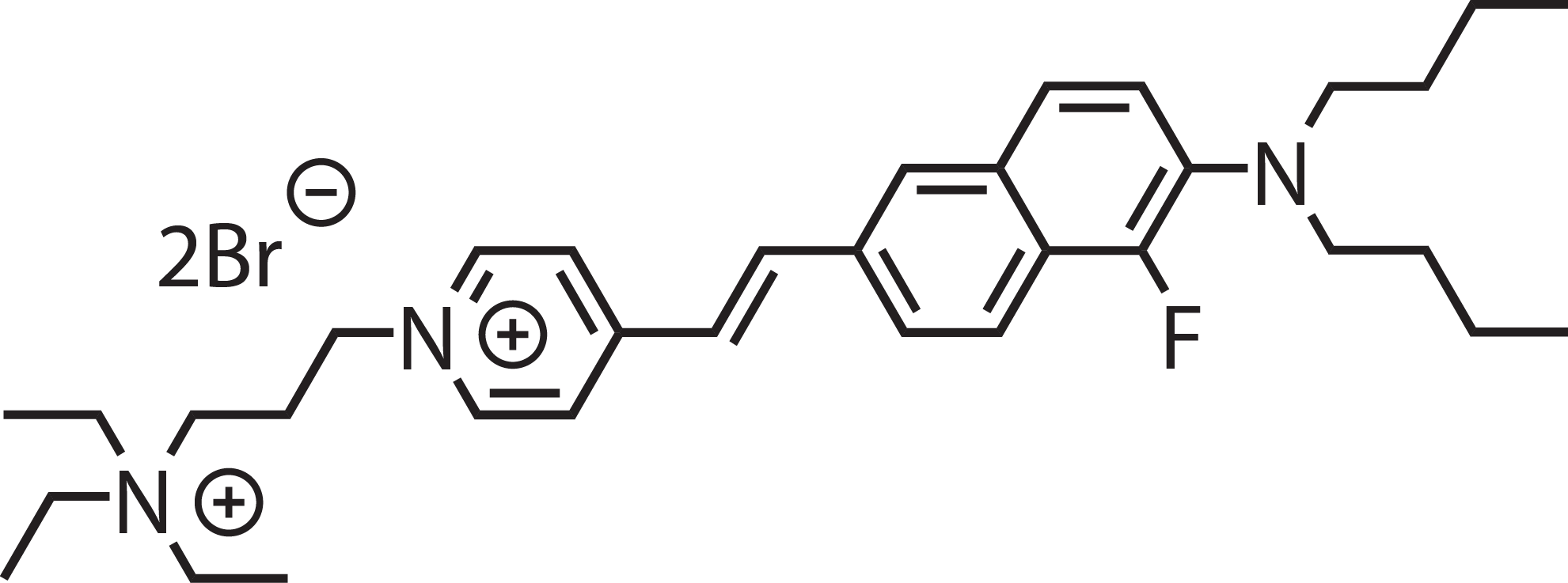Highlighted Application
From Crocini et al. 2014 (2) Figure 3: Delay of Ca²⁺ release in AP-failing TT of acute detubulated cells.
(A) TPF image of a stained rat ventricular myocyte after formamide-induced osmotic shock; membrane potential optical recording in magenta and [Ca²⁺]i in green. (Scale bar, 5 μm.)
(B) Average of 10 subsequent fluorescence traces (ΔF/F0) of voltage (magenta) and [Ca²⁺]i (green) recorded at the three different sites indicated in A: SS and two TTi. APs are elicited at 200 ms (black arrowheads).
(C) Superposition of the Ca²⁺ traces nearby SS and TT1 (Top) and of SS and TT2 (Middle). (Bottom) A close-up of TT2 and SS superposition (interval indicated by dashed line in the middle trace).
Structure and Spectra
Product Details:
Pre-dried aliquots (solid, solvent removed)
Quantity: 100 nmol / tube (68 μg)
2.0-mL free standing polypropylene tubes
Sealed cap
Individually labeled
References
Crocini, C., R. Coppini, C. Ferrantini, P. Yan, L. M. Loew, C. Tesi, E. Cerbai, C. Poggesi, F. S. Pavone, and L. Sacconi. 2014. Defects in T-tubular electrical activity underlie local alterations of calcium release in heart failure. Proc Natl Acad Sci U S A. Pubmed
Yan, P., C. D. Acker, W. L. Zhou, P. Lee, C. Bollensdorff, A. Negrean, J. Lotti, L. Sacconi, S. D. Antic, P. Kohl, H. D. Mansvelder, F. S. Pavone, and L. M. Loew. 2012. Palette of fluorinated voltage-sensitive hemicyanine dyes. Proceedings of the National Academy of Sciences of the United States of America. Pubmed





